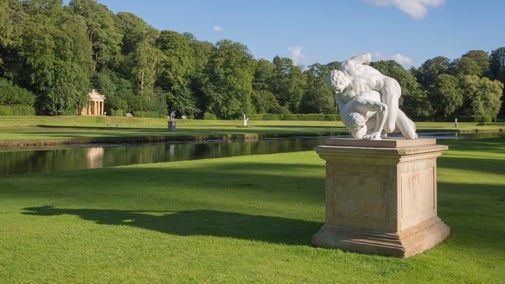
Become a member
Join today and help protect nature, beauty and history – for everyone, for ever. Enjoy access to more than 500 places with National Trust membership.

The National Trust Land Map is a fascinating mapping tool that illustrates the land the Trust looks after, when it was acquired, the location of war memorials, and more. It shows how the variety of places the Trust looks after has increased over time since 1895, and celebrates the generosity of our many benefactors and donors. Use it to explore our history or learn more about the places closest to you.
The land history view displays the area of acquisitions in 20-year bands, showing our growth since 1895. You can click on a highlighted area of land to find out more about that acquisition, from how it was funded to who the original owner was.
The war memorials view shows you the story behind the approximately 170 memorials on our land, and a further 140 memorials which are connected with our places, the donor families or estate workers.
The Land Map is an easy way to explore National Trust history. To get started, search by postcode, address or the name of a place, or you can just browse the map and zoom in to the location you’re interested in. You can then:
When you're selecting whether you want to view land acquisitions or war memorials, if you expand all the options, you’ll see a key, showing the symbols used in the map.
For instance, the colour of the land shows you the date range in which it was acquired, and war memorials are marked with a red or black poppy, depending on their location.
For more advice on using this tool, the question mark icon allows you to discover more about how to use the Land Map.

The War Memorial symbol has been sourced from www.flaticon.com and created by Freepik.

Join today and help protect nature, beauty and history – for everyone, for ever. Enjoy access to more than 500 places with National Trust membership.

Taking part in sports is a popular pastime all over the world. From the origins of the Olympics to the evolution of cricket, discover sports through the ages at the collections and places we look after.

The 13,000 oil paintings in our care are nearly all displayed in the houses of their historic owners. Learn about the stories behind a selection of the artworks and their owners.

Learn the ancient origins, traditions and folklore of the summer solstice and discover how midsummer was celebrated in millennia past at some of the places we care for.

Discover how it became popular in the 18th and 19th centuries to style literature, architecture, art, music and more after the features of the late medieval Gothic period.